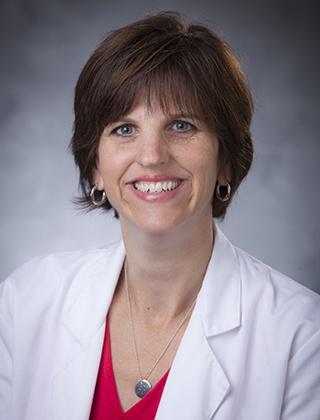This past January, my sister and I found ourselves in a temporary new role: caregiver for an aging parent. It’s a role I am sure many find themselves in at some point, whether by choice or by necessity. In fact, the Centers for Disease Control and Prevention (CDC) estimates 25 percent of us aged 18 and older provide some degree of ongoing assistance on a regular or daily basis to those with long-term illness or short-term disability. That is almost 32 million people, according to a 2015 report.
Like many others, I think we were caught off guard by how unprepared we were for dealing with the emotional side of this role, despite the fact that we are both medical professionals with more than 30 years of experience between us. Seeing our normally active, independent father incapacitated and in pain — even for a short time — was hard. Admitting to ourselves that our dad was aging was tough and in some ways, we forgot all those critical little pointers we had both offered the families of those we have cared for.
My dad lives in southern Virginia in a rural town not too far from Durham, but just far enough to be “far from home.” He elected to come to Duke for his knee replacement surgery, and because he lives alone and did not want to be a burden on anyone, he elected to go to rehab for a short time afterward. He chose to stay in Durham because “Teah knows the good places.” Talk about pressure.
For the three weeks my father was in Durham, I made sure I saw him every day. I balanced my caregiving role with all my regular activities, including full-time work as a physician, wife, and mother of 6-year-old triplets. I wanted to make sure my dad was well cared for and that he had everything he needed, from laundry to bedside snacks. When he dropped his glasses and the nose piece broke rendering them unusable, I was at Walmart getting them adjusted almost the same day so he could read his daily newspaper. And I wanted to make sure he didn’t feel lonely. On the weekends, I made sure the kids and I visited daily.
It was just three weeks, but in that time, I forgot to make sure I was taking care of myself. My focus was literally on someone else — my patients, my husband, my children and my dad — all of the time. For those three weeks, I did not attend to my own needs — sleep, proper eating habits, nor exercise. When we transitioned my dad back home, my sister’s efforts kicked in providing more caregiving responsibilities than I had, and I felt an overwhelming sense of relief, but also, sadness, worry and anxiety about what the future may hold.
Caring for the caregiver
My sister is a seasoned geriatrics nurse who has worked her entire professional career in long-term care, and in my specialty, I interact with caregivers on a regular basis. I know all the community resources available in the Durham community, I know how to problem solve issues surrounding the care of loved ones, and most importantly, I understand the stress that comes along with the job. And it is a job. Estimates of this unpaid care provided by these individuals is valued at more than $450 million. But even with knowing this, my sister and I were unexpectedly challenged, both emotionally and physically.
In family medicine, we assess parental coping routinely in our well child visits. Yet, rarely do we ask in routine clinical encounters if a patient is caring for their parent or another loved one and how they are coping. I have found it casually comes up in the clinical encounter, and of course, once identified, can be inquired about from then on. But caregiver stress is important to screen for and assess in this population, as is caregiver burnout — a state of physical, emotional and mental exhaustion — that can be detrimental to the care of their loved one. The CDC reports that the impact of caring for an older adult includes elevated levels of depression and anxiety, higher use of psychoactive medications, worse self-reported physical health, compromised immune function, and an increased risk of early death. There is also a high level of economic hardship due to lost wages and additional medical expenses.
Until you walk in the shoes of a caregiver, it is hard to really know the sacrifices made by those individuals. And though our responsibilities in the care of my father this time were temporary, we experienced what so many of my patients’ families experience on a day-to-day basis. Figuring out expectations — including those of our father, each other and ourselves — would have been helpful. In hindsight, I can see how better prepared my sister and I need to be as a unit to tackle what might lie ahead.
So, what can we do as clinicians? Identifying caregivers is the first step. Ensuring they feel supported and have the resources and tools to do their job is critical. There are many wonderful resources available through the CDC, but also through the Duke Family Support Program and health aging websites. I always tell the caregivers I encounter that they have one of the hardest jobs and that they cannot expect to take care of their loved one if they don’t take care of themselves first. Now I know I need to take those words to heart.
Teah Bayless is core faculty with the Duke Family Medicine Residency Program and a health care provider in the Duke Family Medicine Center. Email teah.bayless@duke.edu with questions.
Editor’s note: A member of the Duke Family Medicine faculty guest blogs every month. Blogs represent the opinion of the author, not the Department of Community and Family Medicine or Duke University.
